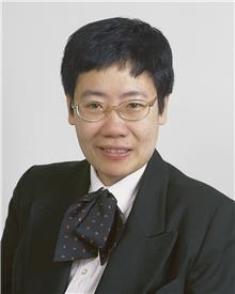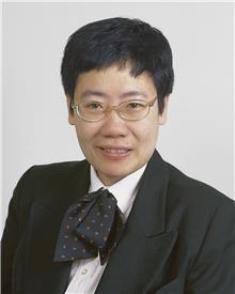
Credit: Cleveland Clinic
March 27, 2017, Cleveland: Charis Eng, M.D., Ph.D., of Cleveland Clinic and her team have discovered that a faulty, rarely studied gene called USF3 may predispose individuals to thyroid cancer. They recently published this discovery in Human Molecular Genetics.
Differentiated thyroid cancer (DTC) is the fastest rising incident cancer in the U.S. Although epidemiologic studies show that thyroid cancer is the most familial of all solid tumors, the known genes predisposing to DTC do not account for all the familial nature of DTC.
Dr. Eng, Chair of the Genomic Medicine Institute in Cleveland Clinic's Lerner Research Institute, is an expert in the study of Cowden syndrome (CS), an autosomal disorder that predisposes individuals to breast, thyroid and other epithelial cancers. Patients with CS develop noncancerous growths, called hamartomas, which can appear on the skin, in mucous membranes and in the intestinal tract. This disease affects at least one in 200,000 people. With up to 50 percent of CS patients testing negative for all known genetic mutations, the syndrome remains an underdiagnosed and difficult-to-recognize condition.
Dr. Eng's team discovered a novel genetic cause for CS/CS-like disorder by focusing on thyroid cancer predisposition in a family with CS and thyroid cancer. Using a combined family-based, whole-genome sequencing strategy, they identified an inherited variant (a compound heterozygous deletion) in USF3 in a subset of heritable CS/CS-like patients.
The deletion or malfunction of USF3 causes a very stressful micro-environment, including metabolic issues and structural instability of the cell. The metabolic issues stem from an enhanced epithelial-to-mesenchymal transition (EMT) signature, which is known to cause tumor progression and metastasis. The cell surface is also compromised from necrosis-like features and impaired respiratory capacity, all of which are hallmarks of cancer.
Additionally, of the nine family members studied, seven were affected with papillary thyroid cancer. Dr. Eng's team found the USF3 deletion in those family members affected with thyroid cancer and thus suspected that USF3 may be involved in a predisposition toward thyroid cancer.
The researchers also discovered a potential therapeutic strategy given USF3's glutamine-dependent cell survival advantage. Like most tumor cells, USF3-deficient cells actually can survive low-glucose conditions, but this survival requires glutamine supplement, suggesting that glutamine removal might have therapeutic potential in patients with USF3-related thyroid cancer.
The discovery of this cancer predisposing gene will facilitate predictive genetic testing, risk assessment, genetic counseling and clinical management of the disease. Currently there is no genetic test for USF3, but these findings could improve therapeutic and preventive interventions for both sporadic cancer and cancer predisposition in similar mechanisms.
###
About Cleveland Clinic
Cleveland Clinic is a nonprofit multispecialty academic medical center that integrates clinical and hospital care with research and education. Located in Cleveland, Ohio, it was founded in 1921 by four renowned physicians with a vision of providing outstanding patient care based upon the principles of cooperation, compassion and innovation. Cleveland Clinic has pioneered many medical breakthroughs, including coronary artery bypass surgery and the first face transplant in the United States. U.S.News & World Report consistently names Cleveland Clinic as one of the nation's best hospitals in its annual "America's Best Hospitals" survey. Among Cleveland Clinic's 49,000 employees are more than 3,400 full-time salaried physicians and researchers and 14,000 nurses, representing 120 medical specialties and subspecialties. The Cleveland Clinic health system includes a 165-acre main campus near downtown Cleveland, nine community hospitals, more than 150 northern Ohio outpatient locations – including 18 full-service family health centers and three health and wellness centers – and locations in Weston, Fla.; Las Vegas, Nev.; Toronto, Canada; Abu Dhabi, UAE; and London, England. In 2015, there were 6.6 million outpatient visits, 164,700 hospital admissions and 208,807 surgical cases throughout the Cleveland Clinic health system. Patients came for treatment from every state and 180 countries. Visit us at http://www.clevelandclinic.org. Follow us at http://www.twitter.com/ClevelandClinic.
Editor's Note: Cleveland Clinic News Service is available to provide broadcast-quality interviews and B-roll upon request.
Media Contact
Alicia Reale
[email protected]
216-445-8324
@ClevelandClinic
http://www.clevelandclinic.org
############
Story Source: Materials provided by Scienmag





